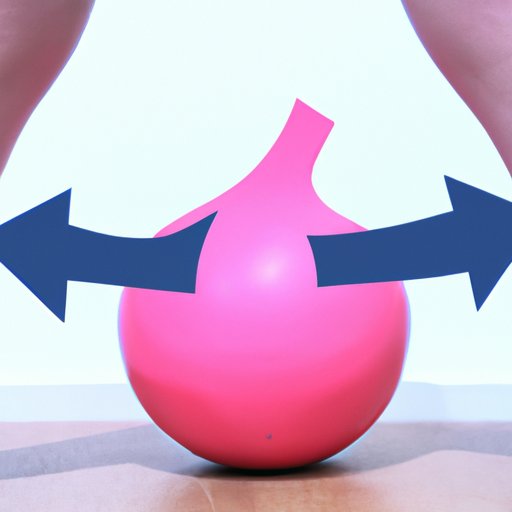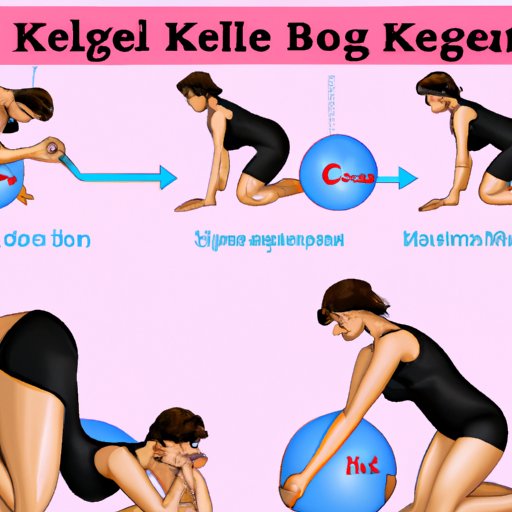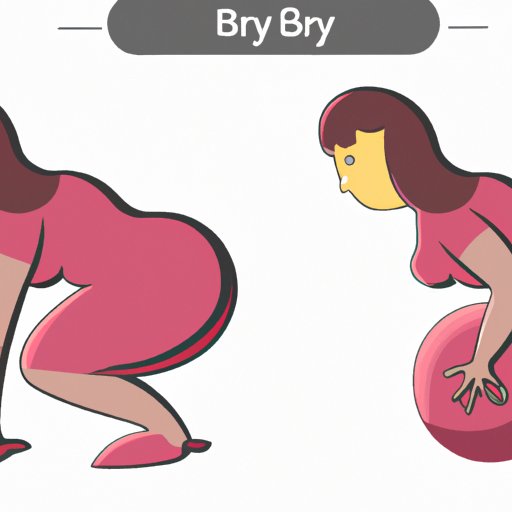Introduction
Kegel exercises are a simple yet effective exercise that can provide numerous health benefits for women. Named after Dr. Arnold Kegel, who developed them in 1948, Kegel exercises involve contracting and relaxing the muscles of the pelvic floor. When done regularly, Kegel exercises can help improve bladder control, reduce incontinence, and even enhance sexual pleasure. In this article, we will explore what Kegel exercises do, how to properly perform them, and how they can benefit you.
A Comprehensive Guide to Doing Kegel Exercises Properly
To get started with Kegel exercises, the first step is to identify and isolate the pelvic floor muscles. This can be done by stopping the flow of urine while urinating or simply by tightening and releasing the muscles in the pelvic area. Once the muscles have been identified, it is time to start performing Kegel exercises.
Performing Kegel Exercises
To do Kegel exercises, simply contract the pelvic floor muscles for five seconds, then relax for five seconds. This can be done anywhere at any time, and no special equipment is needed. It is important to focus on isolating the pelvic floor muscles and not engaging other muscles in the body. This will ensure that the exercise is being done correctly and is providing the maximum benefit.
Maintaining Proper Form
It is important to maintain proper form when doing Kegel exercises. The goal is to contract the pelvic floor muscles as tightly as possible without straining other muscles in the body. To ensure proper form, focus on keeping the abdominal and gluteal muscles relaxed while contracting the pelvic floor muscles. Additionally, it is important to keep breathing normally throughout the exercise.
Timing and Repetition
For best results, Kegel exercises should be done three times a day, with each session lasting approximately 10 minutes. Each repetition should last five seconds of contraction followed by five seconds of relaxation. Over time, the duration of each repetition can be increased up to 10 seconds of contraction and 10 seconds of relaxation.

The Science Behind Kegel Exercises and Its Effects on Pelvic Floor Muscles
Kegel exercises work by strengthening the pelvic floor muscles. These muscles, which are located in the lower abdomen, support the bladder, uterus, and rectum. When these muscles are weakened, it can lead to urinary and fecal incontinence, pelvic organ prolapse, and other issues. Strengthening the pelvic floor muscles through Kegel exercises can help prevent these problems and improve overall health.
Anatomy of the Pelvic Floor Muscles
The pelvic floor muscles are made up of several different muscles, including the pubococcygeus, iliococcygeus, puborectalis, and iliococcygeus. These muscles are connected to the bones of the pelvis and act as a sling to support the pelvic organs. They also play an important role in controlling the bladder and rectum. By strengthening the pelvic floor muscles, Kegel exercises can help improve bladder control, reduce incontinence, and even increase sexual satisfaction.
How Kegel Exercises Strengthen the Pelvic Floor Muscles
Kegel exercises work by targeting the pelvic floor muscles and strengthening them. By repeatedly contracting and relaxing the muscles, they become stronger and more resilient. Over time, this can lead to improved bladder control, reduced incontinence, and enhanced sexual pleasure.
Other Benefits of Kegel Exercises
In addition to improving bladder control and reducing incontinence, Kegel exercises can also provide other benefits. These include improved circulation, better posture, and decreased pain in the lower back and pelvic region. Additionally, Kegel exercises can help improve sexual response and arousal.

How to Perform Kegel Exercises for Maximum Benefit
To get the most out of Kegel exercises, there are a few things to keep in mind. Setting goals and staying motivated are key to success. Additionally, incorporating Kegel exercises into your daily routine will help ensure that you are getting the most out of the exercises.
Setting Goals
Setting realistic goals is an important part of any exercise program. For Kegel exercises, set a goal of performing three sets of 10 repetitions per day. As your strength and endurance improve, you can increase the number of repetitions and sets.
Staying Motivated
Staying motivated is essential to achieving your goals. Try setting small, achievable goals and rewarding yourself when you reach them. Additionally, tracking your progress and celebrating your successes can help keep you motivated.
Incorporating Kegel Exercises into Your Daily Routine
Making Kegel exercises part of your daily routine is key to achieving long-term success. Try to incorporate Kegel exercises into activities such as brushing your teeth, watching television, and cooking. This will help ensure that you are consistently doing the exercises and reaping their benefits.
Understanding the Role of Kegel Exercises in Pregnancy and Postpartum Care
Kegel exercises can be especially beneficial for pregnant women and new mothers. During pregnancy, Kegel exercises can help prepare the body for childbirth by strengthening the pelvic floor muscles. After birth, Kegel exercises can help speed up postpartum recovery and reduce the risk of incontinence.
Benefits During Pregnancy
During pregnancy, Kegel exercises can help strengthen the pelvic floor muscles and prepare the body for childbirth. Additionally, they can help reduce the risk of tearing during delivery and decrease the risk of hemorrhoids. Finally, Kegel exercises can help reduce labor pain.
Benefits After Birth
After giving birth, Kegel exercises can help speed up postpartum recovery. They can also help reduce the risk of incontinence and improve bladder control. Additionally, Kegel exercises can help restore the shape of the vagina and improve sexual satisfaction.

Tips and Tricks for Making Kegel Exercises Part of Your Daily Routine
Making Kegel exercises part of your daily routine can be challenging. Here are some tips and tricks to help make it easier:
Scheduling Regular Exercise Sessions
Schedule regular exercise sessions so that you don’t forget to do your Kegel exercises. You can even set reminders on your phone or computer to help you remember.
Incorporating Kegel Exercises into Other Activities
Try to incorporate Kegel exercises into activities such as brushing your teeth, watching television, and cooking. This will help make them part of your daily routine.
Setting Realistic Goals
Set realistic goals and stay motivated by tracking your progress and celebrating your successes. This will help ensure that you are consistently doing the exercises and reaping their benefits.
Conclusion
Kegel exercises are a great way to strengthen the pelvic floor muscles and improve overall health. By regularly exercising the pelvic floor muscles, women can experience improved bladder control, reduced incontinence, and enhanced sexual pleasure. Additionally, Kegel exercises can be beneficial during pregnancy and postpartum care. To make Kegel exercises part of your daily routine, set realistic goals, stay motivated, and incorporate them into other activities. With dedication and consistency, Kegel exercises can provide numerous health benefits.
(Note: Is this article not meeting your expectations? Do you have knowledge or insights to share? Unlock new opportunities and expand your reach by joining our authors team. Click Registration to join us and share your expertise with our readers.)
